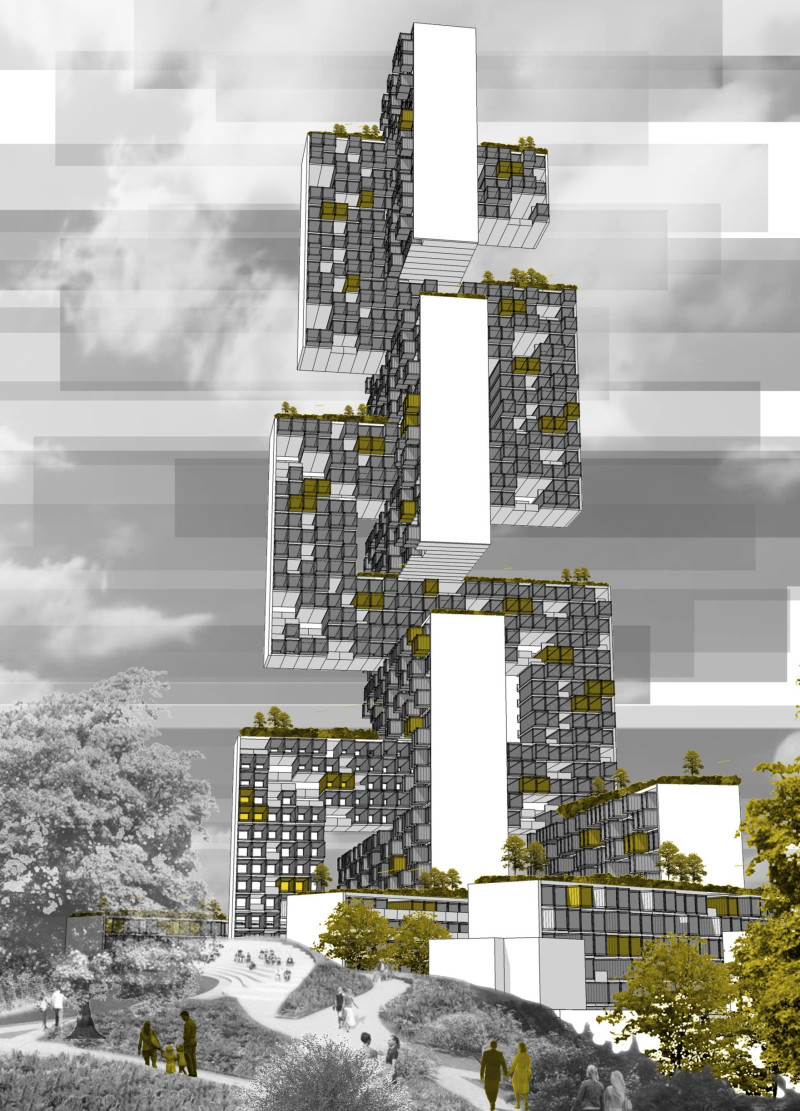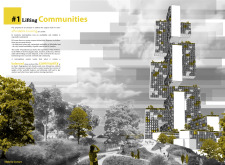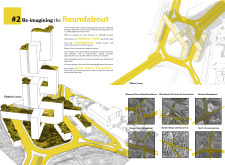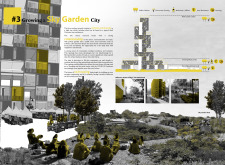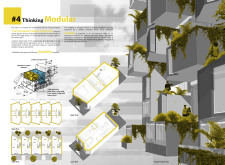5 key facts about this project
The core function of this design is to create a sustainable and inclusive living environment that seamlessly integrates residential spaces with communal areas, fostering a sense of belonging among residents. This project reimagines underutilized urban spaces such as highway land and roundabouts, transforming them into lively residential zones that encourage social interaction and community building. By focusing on mixed-use developments, the design offers essential amenities alongside housing, thereby enhancing the overall urban experience.
One of the most notable aspects of this project is its innovative architectural design that incorporates vertical community living. The layout features a series of staggered buildings that optimize views and natural light for all units, allowing for a varied living experience while maintaining a connection to the outdoors. Each structure includes communal terraces and gardens that not only provide green spaces but also act as social hubs where residents can gather and engage with one another.
Materiality is an important consideration in this architectural project, with an emphasis on sustainability and durability. The use of prefabricated steel frames allows for a robust yet flexible design, accommodating various heights and configurations while facilitating efficient construction. Additionally, glass finishes are employed extensively, not only to enhance aesthetic appeal but also to maximize natural light within the living spaces. Composite panels and green roof systems further contribute to the project's energy efficiency, creating comfortable living environments that also support ecological goals.
Unique design approaches in this project include its modular construction method, which allows for adaptable housing solutions to meet the diverse needs of the community. This flexibility enables a range of housing types, from one-bedroom apartments to larger family units, which is essential in a city facing a housing crisis. Furthermore, the integration of public plazas and local business spaces within the development underscores a commitment to fostering economic vitality within the community, supporting local employment opportunities and encouraging entrepreneurship.
The project's emphasis on environmental and community sustainability is also a key element of its design philosophy. By introducing vertical green spaces and sky gardens throughout the buildings, the design actively contributes to better air quality and biodiversity. These features not only improve the residents' quality of life but also promote ecological responsibilities within the urban context.
In summary, the Tibbets Corner architectural project stands as a model for future urban designs by highlighting the importance of community-centric living in an increasingly dense city landscape. The thoughtful integration of residential units with communal spaces reflects a commitment to enhancing the urban experience through innovative design and sustainable practices. Readers interested in exploring the full scope of this project are encouraged to review the accompanying architectural plans, architectural sections, and architectural ideas, which provide deeper insights into the design elements that shape this notable initiative.


